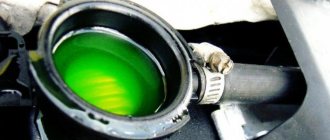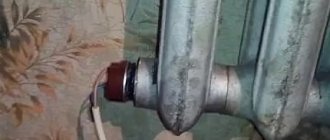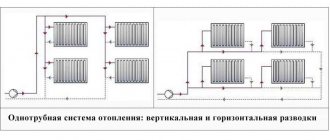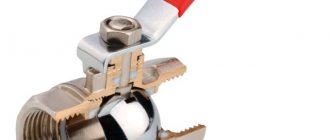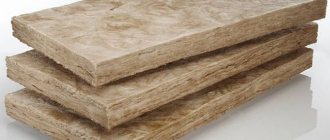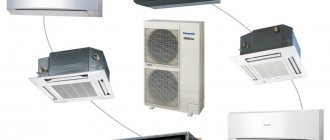A diligent housewife knows that it will take a lot of time and effort to clean the radiators. Unsurprisingly, this procedure is not enthusiastic and time after time postponed until the general cleaning.
Layers of dirt and dust, deposited on the radiator, not only significantly reduce heat transfer, but also spoil the appearance of the room, giving the house a spirit of neglect and untidiness. Our recommendations prove that washing batteries is not as difficult as it might seem at first glance.
The more often you wash the radiators, the more efficiently they will participate in the heat exchange process and will last much longer.
Internal cleaning secrets
There are several ways how to clean dust and dirt from radiators at home. Depending on which side (internal or external) the procedure will be carried out, the procedure also differs.
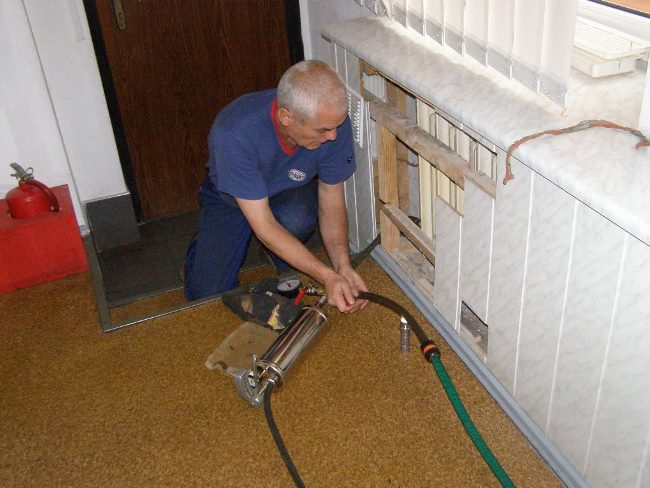
To flush the batteries inside, it is better to call the master
To remove limescale or rust inside, follow the algorithm:
- Close the water supply valves, unscrew the fastening nuts, remove the protective panel covering the radiator (if any). Rinse the grate in the bathroom with warm water, soap solution removes more serious dirt.
- Drain off excess water carefully.
- Clean the areas between sections where the most dust accumulates using the narrow nozzles on the vacuum cleaner.
- Proceed with the internal cleaning: tap each section with a hammer or mallet - this will accelerate the detachment of rust and salts. By tilting the radiator, shake out any large debris.
- Having unscrewed the end caps with a wrench, pour boiling water into the tanks of the sections, leave for 30-40 minutes - all the dirt "flows" together with the liquid.
- Rinse with a shower or hose until the pouring water is clear. Clean up dirt with a brush or an old long-handled brush.
- Remove accumulated dust in hard-to-reach places by hand by wearing heavy-duty cloth gloves and dampening them with soapy water or a cleaning agent.
- If the raid is not going to give up its positions, special household chemicals ("Tiret", "Domestos", "Comet", "Silit", "Mister Proper") are used. Make sure that the product matches the material from which the batteries are made. Apply the mixture liberally, wait for the duration of action (indicated in the instructions), rinse with warm water, wipe with a rag. This method is relevant for both internal and external cleaning.
Experts advise to carry out manipulations on the street or in the bathroom, as a lot of dirt remains. Cover the bathroom floor and plumbing with a thick cloth so as not to damage the coating.
How to clean the heating battery yourself
Before dismantling work, you must drain all the liquid from the line. Therefore, it is not recommended to do this in winter, since there is more water and, accordingly, no less trouble.
If the procedure is not prophylactic, it should be cleaned with a special tool. It can be made from scrap materials or bought.
Important: if you need to flush out the contents of a cast iron radiator, you must remove all plugs.
The sequence of actions for the apartment option:
- First flush - filling with hot water. It should not be boiling water, because it contains a large amount of insoluble salts, which will stick to the walls of the product again. Plug outlets and shake battery well. Drain everything.
- The second wash is a control one with an additional substance. It is better to prepare the solution in advance. When using a chemical, the amount is regulated by the manufacturer, which is indicated in detail on the packaging. For each homemade drug based on a folk recipe, a separate individual measure is indicated.
- After pouring liquid into the heat exchanger, you need to plug all the holes again and leave the product in this position for several hours.
- Returning to the radiator, shake it so that the layers of limescale and other dirt, which have softened under the influence of the active substance, fall off.
- Remove plugs and allow contents to drain.
- Pour clean warm water several times to wash off the remaining reagent.
Advice: it should be remembered that when cleaning the element in the bathroom, you will then need to remove from the container everything that has flowed out of the radiator.
If you ignore the last procedure and do not remove the residues of foreign matter, this may later cause deformation or destruction of the material of which the product is made.
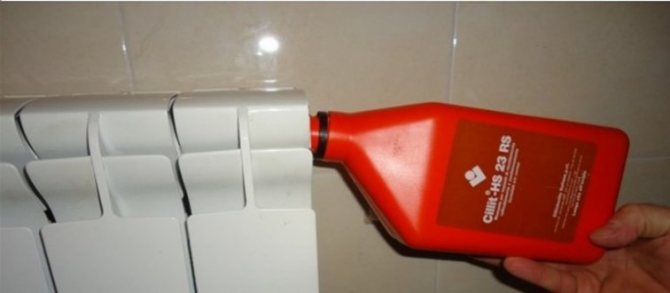

Handy cleaning products
The means at hand will help you get to the most distant nooks between the battery sections.
- Sprayer or country sprayer. Place a rag or a small container under the heating radiator so that the liquid does not drip onto the floor. Dissolve a few drops of dish detergent in water and spray on the dirt. Leave to soak. Then wash off the softened plaque with a sponge or cloth.
- Brushes for painting windows with long handles and curled bristles and brushes. Alternatively, wrap a thin strip or ruler at least 15 cm long with a cloth soaked in cleaning solution.
- Toothbrushes are suitable for cleaning stubborn dirt.
- You can remove accumulated fat on cast iron kitchen batteries with boiling water. Put a small pallet, cover the finishing materials around with a film or rag. Pour the battery from top to bottom with hot water from the kettle. Dust along with it falls into the pallet, which we pour into a bucket brought in advance. After treatment with boiling water, we simply wipe the radiator with a dry cloth.
- You can water the battery from top to bottom and from a hose connected to a hot water tap. But in this case, it is better to put a container under the battery, and have a bucket with good capacity nearby. When working with boiling water, you need to be extremely careful so as not to scald your feet or burn your hands. For convenience, you can work in special mittens or use kitchen potholders.
- The foam sponge can be cut in half so that a hole is formed inside, and a ruler or any wide lath can be inserted into the resulting cut.


Battery cleaning sponge with bendable ruler for convenience
In a non-heating season or in case of replacing risers around the house, you can remove the battery, place it in a container filled with water and detergent. Allow time for soaking, and then wash off all accumulated dirt during the period of operation with a jet of water. If a bathtub is used as a container, then it should be covered with thick terry towels so as not to damage the enamel.
Appliances
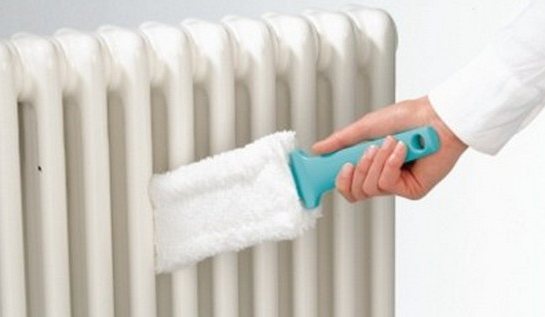

Some household appliances will help to wash the heating batteries and clean them of contamination:
- Use a vacuum cleaner. If it is supplemented with a narrow nozzle, it will come in handy when cleaning heating devices. First, remove all dust on the inside, then carefully treat the outer surface. After this procedure, you can wipe the radiator with a damp cloth.
- A hairdryer will also help. Using it is quite simple: hang a damp towel or any sufficiently thick cloth, also pre-moistened, behind the battery. Now turn on the hair dryer and start blowing hot air onto the radiator. All dust will fly off the surface and settle on the damp material.Nevertheless, some of the dirt can remain between the sections or settle on the floor and walls.
- The steam generator will help to wash the batteries "accordion". If you have such a device, turn it on and direct a jet of hot steam towards the heater. Thermal exposure will dissolve even old dirt and additionally disinfect the batteries, which is sometimes necessary. To protect all surrounding surfaces, cover them with oilcloth or old cloth. And remember that hot steam can damage the finish, especially if the paint has been applied for a long time and in one coat.
- Other appliances such as a steamer and an iron also produce steam, but they are not as convenient to use for cleaning. And the steam generator delivers a jet of hot air under pressure, thanks to which it penetrates into narrow areas and hard-to-reach areas.
- Use an electric kettle. First, place a wide baking sheet or other large flat container under the battery, then boil water and pour it onto the heater from above along the entire length, as well as from the sides. Water and dust will drain into the baking sheet and collect in it. The electric kettle can be replaced with an ordinary one. It is convenient to clean in this way. old battery.
We recommend: How to clean a baking sheet from carbon deposits and fat
Why wash heating radiators
Batteries must be cleaned if they become dirty on the inside to eliminate heat loss. The resulting plug or thick rust on the internal surfaces of the radiator reduces heat transfer, which makes the room warmer worse. Over time, corrosion, if not eliminated, will spread throughout the system.
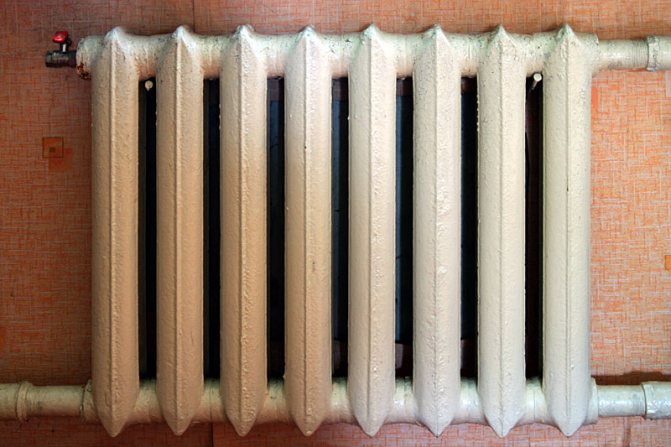

If you postpone washing, the radiators can become completely clogged, and then they will need to be completely replaced.
Special means
You can wash the battery with the help of household chemicals, of which there are a great many on store shelves today. These can be oxygen bleaching agents of the "Vanisha" type, powders and liquid compositions, one way or another purchased for domestic needs. Before using a specific agent on a radiator made of a specific material (cast iron, aluminum, bimetal), it is better to make sure that the use of the composition is not contraindicated in this case. Corrosive substances can spoil the appearance of the radiator.
To prevent the heater from becoming covered with rust, you can choose a special composition that prevents its appearance. It is better not to use chemicals containing phosphates or chlorine, which are harmful to the human body, in cleaning.
Sometimes the easiest way to clean the radiator is with ordinary soap - household, bath or liquid, which is diluted in water. The entire battery is treated with this solution.
What to wash first?
Many people wonder whether it is necessary to first wash the battery outside, or is it better to first clean it from the inside? We advise you to start external cleaning: remove all dust from the radiator, and if it is in the kitchen, then, possibly, a grease film.
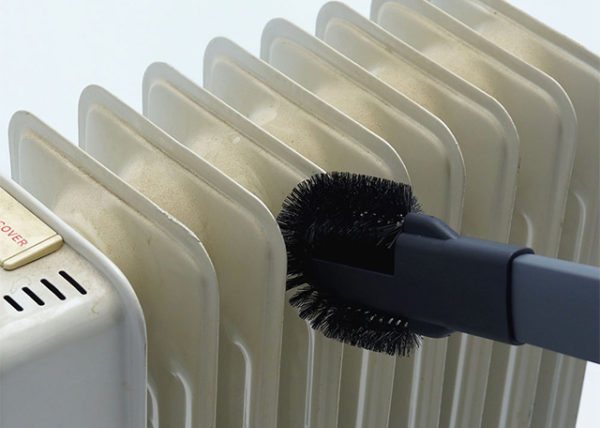

Special brush
After you remove the battery, you need to clean the wall, floor, fasteners from dirt and dust - everything that was hidden from you by the radiator. And after that, with peace of mind, proceed to internal cleansing.
Dust on the heating radiator - what is the danger?
To begin with, let us take as an axiom the fact that there is always dust at home. No matter how thoroughly cleaning is carried out, the radiators attract dust. A particularly difficult situation is in the kitchen, where, in addition to dust, there are also drops of fat, high humidity and other factors that contribute to the rapid contamination of the battery.


Due to the high temperature when the battery or electric radiator is heated, the dust is burned out. This is noticeable almost immediately - a specific smell appears, and in addition it becomes uncomfortable to breathe. Allergy sufferers, asthmatics and the elderly are the first to notice such changes. This means it's time to start cleaning and clean everything inside and out with your own hands.
Features of radiators
In new or old apartments of the Khrushchev type, mainly cast-iron batteries, the so-called accordions, are installed. They are renowned for their long life and stay warm for a while after the hot liquid has stopped renewing. Cast iron tolerates work with pressure drops in the system and low-quality contents more easily. But such radiators are also more expensive.
Products made of bimetallic material are cheaper, thinner and lighter. They differ in increased heat transfer, but they also cool down quickly. They are easier to clean from the outside and look more aesthetically pleasing.
They clog less often, because they are made of a smoother material, to which less dirt sticks. But bimetallic batteries often burst, unable to withstand a sudden pressure surge in the system. This is not uncommon at the beginning of the heating season or during sudden temperature changes. Therefore, they are preferred to be used in private homes or commercial buildings.
Aluminum products are the cheapest, but they are fragile and short-lived. Apartments with an old heating system quickly lose their functionality.
During the maintenance process, each type of battery must be considered individually.
Bottom line: how should you wash to maintain the functionality of the system?
Repair of cast iron radiators is possible on your own, but only for minor defects. If you do not have the necessary tools or lack of experience, contact a professional plumber.
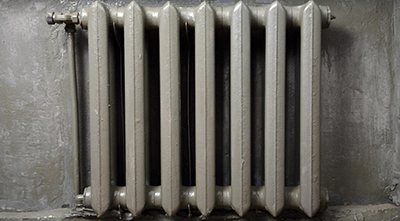

In addition to state-owned companies, there are many private companies with the service of an urgent round-the-clock call of the master.
All home leakage and repair measures are temporary.
Therefore, after the end of the heating season invite specialists, to replace damaged sections or the entire radiator. The sooner this is done, the safer the home will become.
Heating systems in apartments and private houses lose their effectiveness over the years, which leads to a decrease in the quality of heating of the home. Among all the most common causes of this phenomenon, experts highlight the problem of radiator contamination. There is a fairly simple explanation for this: the coolant during circulation along the heating circuit contributes to the destruction of the inner surface of the heating devices.
In addition, the water contains some impurities that can settle inside the heat exchangers. Hence, pollution, blockage and, accordingly, a reduction in the useful volume of radiators appear, which leads to a decrease in their efficiency. And the only correct solution (with the exception of replacing the heat exchangers with new ones) is to flush the heating batteries.
Methods for cleaning radiators inside and outside
The least questions arise when cleaning structures from the outside. It is enough to wipe the surface at least once a week with a damp cloth or sponge, and then with a dry clean cloth. Radiators in the kitchen additionally need to be cleaned of grease deposits - warm water with a few drops of dishwashing gel will cope with this task.
How to clean a heating battery of a complex configuration (for example, an "accordion") from the inside, we will consider below.
First of all, remove the protective shield that hides the radiator (if any). It is most convenient to rinse the grate in the bathtub and then wipe it dry with a clean cloth. To wash off the dust, warm water is enough; heavy dirt will be removed with a soapy solution.
1. Vacuum cleaner. Dust accumulated between the sections of the housing is easiest to remove with a vacuum cleaner. It is great if the equipment is equipped with narrow nozzles that will crawl even into hard-to-reach places.


A vacuum cleaner with a nozzle is the simplest and safest solution
2. Hair dryer. This method is no less effective: hang a large damp rag behind the battery (best of all, a cotton - an old pillowcase or diaper), not forgetting to cover the wall with a waterproof film. Now carefully blow the radiator with a hairdryer: the dirt lurking in the corners will settle on the rags.
Such elementary methods are good if the battery is not running, and are suitable for weekly cleaning, and the whole process takes from 10 minutes to half an hour.
3. Boiling water. Boiling water will help to wash the batteries inside (especially if a large amount of dirt and grease has accumulated on them). Prepare a deep and wide baking sheet (large saucepan), a kettle of hot water, and rags. Place a container for collecting water under the radiator, protect the wall behind the structure and the floor with plastic or stretch film. Carefully pour boiling water over the sections: along with the water, all the dirt will drain into the makeshift tray.
Do not forget to protect your hands from hot water with heavy duty household gloves!
4. Soaped gloves. Experienced housewives offer a simple but effective solution: manual cleaning using fabric (household or ordinary, worn out) gloves. Put them on your hands, saturate with soapy water and use your fingers to scrub the dirt that has accumulated between the sections.
5. Steam generator. The steam generator will cope with dirt and grease on the heating radiators excellently. To prevent hot steam from spoiling the painted or papered wall and baseboard, cover all surfaces with foil.
6. Special store products. Store products (sprays, as well as solutions that can be poured into a spray bottle for convenience) help to thoroughly disinfect and clean the battery. Make sure that the composition for removing dirt and grease is suitable for the material from which your radiators are made (aluminum, bimetal, cast iron).
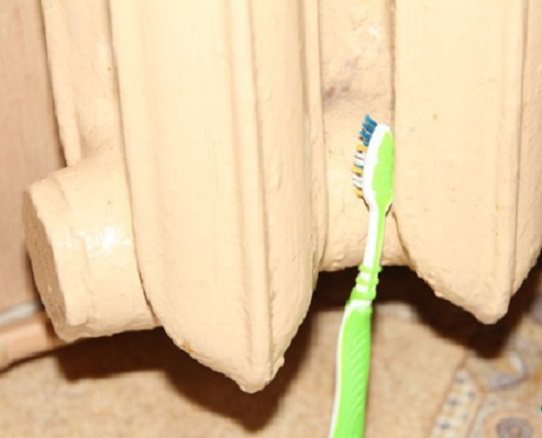

The method of the most patient
Technology: generously apply the product outside and inside the case, leave for the prescribed (according to the instructions) time. Then wash off the remnants of "chemistry" and dirt in the manner described above, or simply wipe the cleaned surface with a dry cloth.
The surface of modern aluminum and bimetallic radiators is smooth and even, which cannot be said about cast iron. In order not to injure your hands with irregularities and "burrs" that are on the cast-iron surface, wash the battery carefully, without rushing.


Special brush saves time
To thoroughly clean all sides of the batteries, buy a special curved brush from your local hardware store. As an alternative, any similar improvised tool is suitable: an old toothbrush, a "brush" for washing bottles, a brush for painting radiators, a ruler, the end of which is wrapped in rags.
Recommended: What items cannot be machine washed?
Washing outside
There are two ways to remove dirt from the radiator - dry and wet. The former is used for regular cleaning to remove dust, the latter is suitable for dealing with more serious dirt, such as grease.
Dry cleaning
Without the use of detergents, you can get rid of dust using:
- Vacuum cleaner. You will need a special narrow nozzle to get to the back surfaces.
- Fena. Wet rags are hung on the wall behind the radiator, a household hairdryer is turned on, dust is blown away, directing the air stream away from you. The damp cloth will keep dirt from spreading throughout the room. After finishing cleaning, remove it and wash it.
- Pipidastra. The special brush easily penetrates the narrowest crevices, and the voluminous soft bristles sweep away dust even from uneven surfaces.


It is recommended to carry out such cleaning regularly. This will help prevent the formation of stubborn dirt deposits.
We also recommend reading: Removing scratches from laminate flooring
Wet cleaning
Suitable for processing the external surfaces of the radiator:
- sponge;
- brush (it is convenient for them to clean the accordion battery);
- rag.
As a cleaning solution, use warm water with the addition of dish gel. Such a composition effectively copes with dust, dirt and grease deposited on kitchen batteries.
Old greasy stains can be softened beforehand:
- put a wide capacity under the battery;
- put a film or oilcloth between the wall and the radiator, the ends of which are lowered into the basin;
- boil water in a kettle;
- gently water the stained areas;
- rub with a brush.
You can use special household chemicals. It is usually available as a spray so it is easy to apply. The remaining liquid and washed off dirt are wiped off with a clean cloth. With a steam generator, cleaning will be much easier: hot steam will quickly remove dirt, even without detergents. In order not to damage the decoration of the walls behind the battery, cover this area with a film, and spread it on the floor. Turn on the device, put on a narrow nozzle and turn on the steam.


Removing paint
If the radiators are old, washing sometimes does not help: in addition to old dirt, the coating can have cracks and chips. To give a presentable appearance to the heating system, you can paint it again. To do this, you will first need to remove the old paint.
How to remove cracked old paint from a battery:
- With a special wash. It is applied with a brush or sprayed, after which it is left for the time indicated in the instructions, and then the softened paint is cleaned off.
- Sandblasting. Adequate equipment will be required, but this method allows you to clean the surfaces thoroughly before re-painting.
- Building hairdryer. In addition to the hair dryer itself, you will need a brush with metal bristles and a rag. Turn on the device, heat the battery to make the paint soft, brush it off. Quite a laborious method.
- A conventional drill with a brush attachment. All surfaces are treated with it until the last layer of paint is removed. Wear a respirator and goggles while working to prevent dust from entering the respiratory tract or eyes.
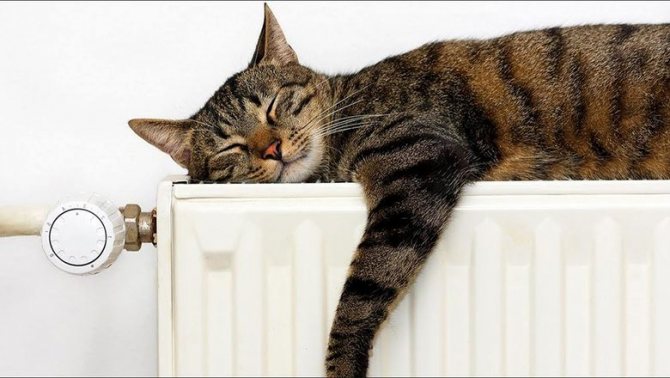

When the paint is removed, the battery is primed and covered with radiator enamel. You cannot use ordinary paint - when heated, it will turn yellow and crack.
The nuances of cleansing outside
Guidelines for removing contaminants from the outside boil down to simple steps:
- The same vacuum cleaner or steam generator will do. In the second case, protect the wall behind the radiator panel and the floor from moisture by covering them with a film. The device additionally disinfects the battery.
- Quickly removes dust by blowing with a hair dryer: place a wet rag on the wall to which the radiator is fixed, “blow out” the dirt (it will settle on the fabric).
- Use a scraper, scrubber, or brush to wipe off stubborn dirt.
- Wipe the surface with a cloth dampened with soapy water. Wipe dry.
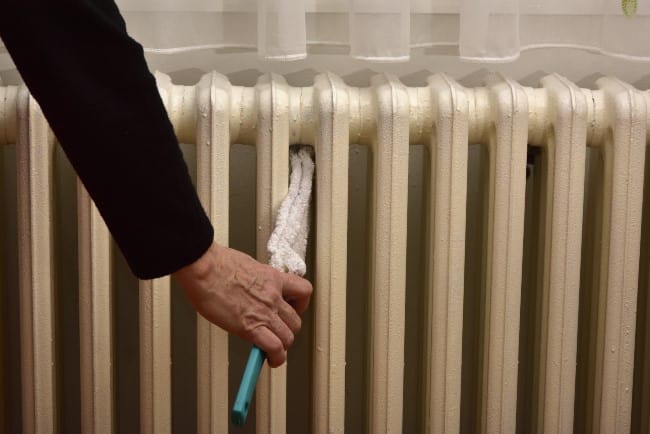

It is easier to clean the radiators from dust and dirt from the outside
In advanced cases, use chemicals or detergents that remove grease, dirt, plaque. Place rags under the batteries so that dirty smudges do not form on the floor after spraying.
Overview! Blinds cleaning brushes
Don't forget about boiling water rinsing and manual cleaning. To enhance the effect, use vinegar, soda, citric acid, alkali, making sure that the home remedy is compatible with the material of the heating batteries.
Larisa, 25 July 2020.
Subscribe to the channel Modern Housekeeping in Yandex.Zen
Save and share information on social networks:
Recommended to read
- Paste from Dr. Beckmann


Preparing for wet cleaning
Before wet cleaning with the use of available tools, the batteries must be prepared.
- Remove dust and cobwebs with a vacuum cleaner, broom or dry cloth, wound on a long ruler or thin strip.
- Cover the floor under the radiator with oilcloth, plastic bag or a piece of old linoleum. Then cleaning it will not add additional cleaning to the room.
- Cover the walls around the radiator with cloths that absorb moisture well so as not to damage or stain the finishing materials.
What funds will be needed?
It is not easy to completely remove dirt in hard-to-reach places, especially if they are old and strong. And if the methods described above did not work, then additional means will increase the cleaning efficiency. You can use both household chemicals and folk recipes.
We use household chemicals
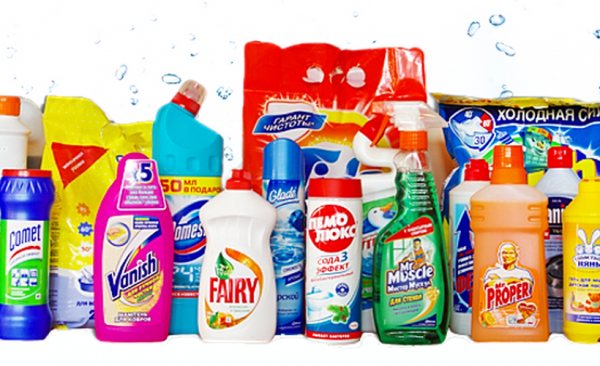

Use specialized cleaning products to quickly clean the battery. To remove fat, you can use dishwashing detergents: "Pemolux", "Fairy", "Sort" and others like that. They will cope with dirt and will come in handy if the radiator is in the kitchen, and food debris or drops of grease get on it.
The selected product must be diluted in water and either foamed and applied with a brush or brush to the outer and inner surfaces of the radiator, or sprayed on the device in the form of a liquid solution with a spray bottle and left for a while, and then rinsed with water or boiling water, not forgetting to put a baking sheet below.
Slight contamination can be removed with soap such as laundry, bath or liquid soap. It is used in the same way as dishwashing detergents: spray or foam.
To wash a heavily soiled cast iron battery, use cleaning or detergents for plumbing or household appliances, such as "Tiret", "Domestos", "Comet", "Silit", "Mister Proper" and others. And the most stubborn and stubborn stains can be removed with stain removers. Suitable means "Antipyatin", "Vanish".
Do not use aggressive agents, as they can damage the coating of the heater. And to protect against rust for preventive purposes, periodically apply anti-corrosion compounds.
We apply traditional methods
At home, you can use folk recipes to clean batteries:
- Use hydrogen peroxide for effective cleaning and additional disinfection. Apply it to a rag that should be wrapped around a brush or stick, and treat surfaces and all hard-to-reach places where pathogenic microorganisms can accumulate and multiply. Hydrogen peroxide also helps with mold, which is formed due to high humidity.
- Citric acid will cope not only with dirt, but also with possible unpleasant odors. Dissolve three teaspoons of this product in a glass of warm water and wipe the radiator with the resulting solution from all sides and from the inside.
- Use vinegar. Table 9%! Can be used undiluted for wiping or spraying on the battery. The essence must be diluted with ten parts of water. After such treatment, you need to thoroughly wipe the radiator or rinse with water.
- Soda also helps to cope with pollution. It dissolves in water and is used to treat heating appliances. You can also add vinegar to it to enhance the cleaning performance. But if you wash the radiator without removing it, be careful, as the product can damage the surrounding surfaces.
Video: we wash out the problem areas of our apartment - a radiator.
Self-cleaning of the radiator
How to wash cast iron batteries from rust is no less important question than "how to do it." Conventionally, this process can be divided into two methods: chemical action on pollution and mechanical.
Household chemicals are most often used as descaling agents, debris and rust.:
- Pipe cleaners such as "Mole".
- Chemical solutions containing caustic soda.
- Citric or acetic acid.
- Means for washing car radiators.
Folk ways
You can wash heating radiators with high quality if you follow the advice of experienced housewives, since many of them are very creative in this matter.
Hydrogen peroxide will help to clean and additionally disinfect the battery. This is especially true in homes where allergy sufferers live. The product must be applied to a rag. Wrap a brush (or just a stick) with a rag and methodically wipe the heater in each section.
It so happens that not only dirt has accumulated in the battery, but an unpleasant smell has also settled. This is possible if, for example, a poorly washed item has been dried on a heating element. In this case, citric acid will help. You need to dissolve three teaspoons of the product in a glass of warm water. With this composition, wipe the radiator from all sides and between the sections.
You can also use nine percent vinegar for washing. They wipe the battery or spray it on it (without diluting it with water). If the household has only vinegar essence, it should be dissolved in water (ten parts of water are taken for one part of the essence). After treatment with an acidic composition, the battery must be properly wiped off or simply rinsed with clean water.
You can also use regular baking soda dissolved in water. To be sure, this composition is supplemented with apple cider vinegar and soap solution. The effect of washing will be more noticeable.
Also, chalk dissolved in water is used to process the battery.
To accurately get to the most inconvenient places in the battery, housewives are advised to use soapy household gloves. Put them on your hands, soak them in soapy water, and use your fingers to scrub the dirt out of tight spots. If you don't have gloves, you can use an old sock. If the battery is hot, unnecessary gloves will do.
For cleaning the most uncomfortable and narrow places, some of the more patient people use a disused toothbrush.
Recommended: How to get rid of mold on the bathroom ceiling
To avoid having to resort to clever ways to clean your radiators, it's best to wash them every time you clean your home. This will save the battery from accumulating a lot of dirt. Then general cleaning of heating elements will have to be arranged only a couple of times a year - before and after the end of the heating season.
For more information on how to wash the batteries inside, see the next video.
Signs of contamination
Before you wash the battery inside, you need to make sure that it is really necessary. This can be done only during the heating season:
- Touch all the batteries in the house, determine if some differ in the degree of heating. If some radiators give off less heat, then they are clogged or their inner walls are covered with rust.
- Touch the riser. It should be about the same temperature as the batteries. If the riser is hot, and the radiators are barely warm, the system is clogged somewhere at the entrance.
- Determine if there are separate poorly heated sections in the batteries. This indicates the formation of a plug in a specific section of the channel.
One of the reasons for the uneven heating of the elements of the heating system may not be a blockage, but the ingress of air into it. In this case, cleaning is not needed, it is enough to carefully open the tap to remove air from the heating battery.
Kettle with boiling water
This method is for specifically contaminated cast iron batteries in the form of accordions. How to clean this problematic area in your apartment:
- We start with dry cleaning, then wash everything with a product and a hard sponge.
- Then we boil a kettle of water, substitute a pan or baking sheet under the battery, protect the floor and walls with rags.
- Pour hot water over a thoroughly soapy cast iron battery (slowly and carefully!) To soften old dirt.
- We wipe.
- Additionally, rinse the device with clean water.
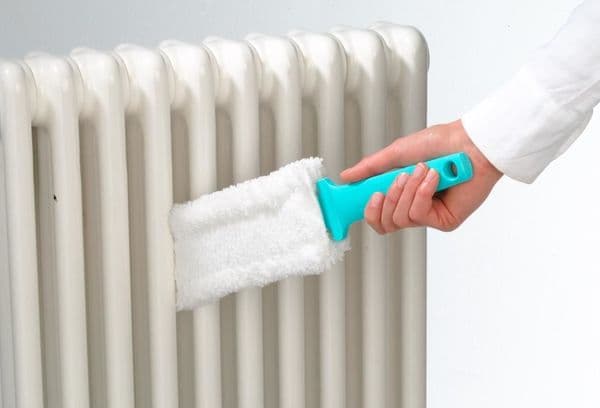

Cleaning radiators
Let's imagine what the cleaning procedure would look like under different conditions.
Flushing with a special device
For quick and effective cleaning of radiators "on the spot" there are special devices for their flushing. Of course, having a device like this for infrequently cleaning your home battery is essentially a luxury.
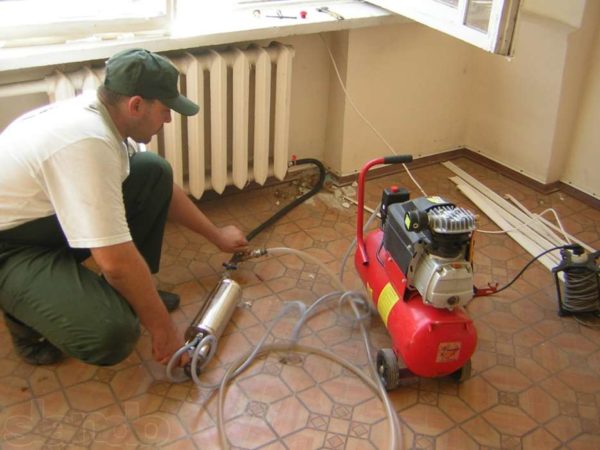

Flushing with a professional device
The device operates on the mains - with a powerful jet it drives water into the radiator, which with its pressure removes scale, rust, grease, and various chemical deposits. But if you do not have this device, you can replace it by cleaning the radiator in the bath.
Bath rinsing algorithm
How to flush batteries in an apartment without being able to pull them out into the street? The instruction will consist of the following blocks:
- Filling in hot water. You will need to pour hot water into the radiator using a hose, shower, watering can, kettle with a narrow spout or an ordinary funnel. Open both plugs so that dirty water can flow freely from them. After there is enough liquid in the battery, shake it and empty out all the contents. The action should be repeated until large pieces of dirt fly out of the radiator to be cleaned. It should be noted that the procedure is difficult to perform alone - the weight of the battery is significant even for a gallant athlete. Therefore, 1-2 assistants in this matter are vital for you.
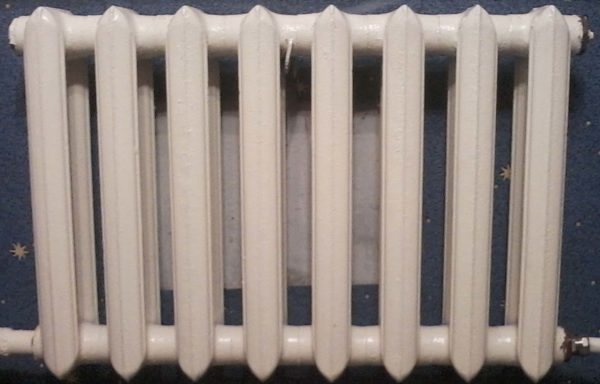

The thing is heavy enough
- Filling in the cleaning agent. In the second step, the substance you have already chosen for flushing is poured into the radiator, diluting it with water. Now it is important to put plugs on all the holes in the battery so that the "useful liquid" does not flow out of it. Depending on the drug, it is left to "sour" for a period of 2 hours or more.
- As soon as the duration of the active component has come to an end, it is necessary to shake the radiator again. You can knock on various parts of it with a wooden, plastic, rubber mallet. This will help to additionally remove rust and other contaminants from its internal parts.
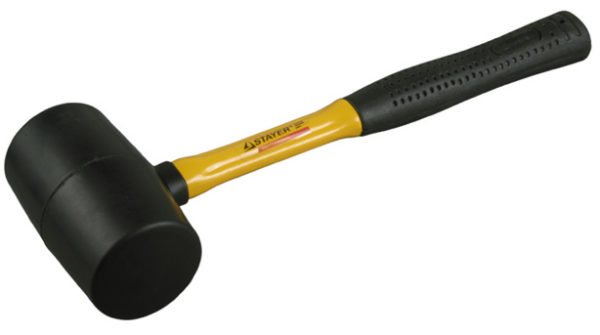

Such a rubber hammer will come in handy
- Now it is important to thoroughly wash the cleaning agent. Therefore, you need to clean it until the foam stops coming out, the smell stops being felt, or the other characteristic features of its presence are manifested in some other way. If you do not rinse the radiator completely, then the active components of the agent will continue to act, destroying the metal from the inside, which will cause leakage and failure of the battery.
The videos in this article will show you how to follow the instructions.
Features of cleaning in a private house
Flushing batteries in their homes is even more important than flushing in apartments. This is due to a number of heating features:


In a private house, flushing can be done without removing the radiator
- The coolant is water from a well, a well, or even a reservoir. Hence, there is more coarse dirt stuck in the radiator in it than in the water circulating through the highways of city heating systems. Therefore, the need for cleaning arises much more often.
- Not only the radiator is washed (blown out), but also the heating main. After all, all the debris stuck in it will invariably end up in a cleaned battery.
- In case of urgent need, you can also clean the radiator during the heating season. Otherwise, it makes no sense to turn off the heating system for cleaning during the cold period.
Features of flushing during the heating period
If you decide to clean the battery during the cold season, then pay attention to the following:
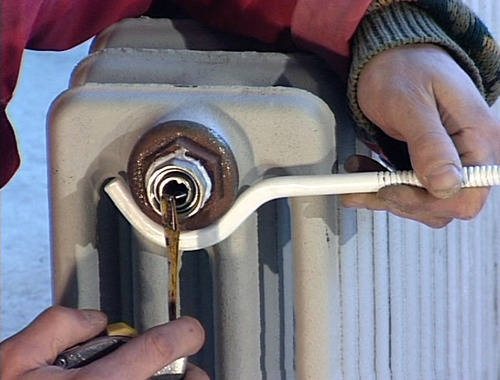

You can also flush in your home during the heating season.
- The cleaning method, as well as detergents, are used the same.
- It is possible to flush the radiators (in a private house) without removing them or draining the water from the heating boiler:
- Disconnect the steam line completely while cleaning.
- Perform purge.
- Put all the valves back on, then let the water flow through the heat circuit.
- Serve it until absolutely clear water flows out of the pipeline.
The measures taken will clean not only the radiator, but also the entire heating main in general.
Thus, it is possible to clean the radiator without removing it only in your own home. Residents of apartments to clean the battery from the inside will have to remove it. An exception for those who have a dedicated battery cleaner.
Flushing methods
It is very important to understand the state of your heater. That is, how much it is clogged with bottom sediments, what are the chances of breaking through the dirt and pulling it out from the inside of the radiator. The larger the mass of sediments, the more difficult it will be to deal with them, the more actively the flushing process will have to be carried out.
Flushing with water
This is the simplest option and does not require much effort. That is, the degree of pollution in this case is not the greatest. What do I need to do:
- We close the shut-off valves. If there are none, then you will have to completely drain the coolant from the heating system.
- Dismantle the radiator: unscrew the American women and remove it.
- If there is a cast-iron bath installed in your house or apartment, then flushing can be carried out in it. If this is a plumbing fixture made of a different material, then the whole process will have to be carried out outside. Old rags are placed in a cast-iron bath in several layers, and the battery will be laid on them.
- All four plugs are removed from the radiator.
- The watering can is removed from the shower hose.
- The radiator is placed on the end.
- A hose is inserted into it and hot water is opened. This pressure is usually sufficient to remove small deposits. Carry out flushing first from one branch pipe, then from the other.
- In order to be sure of the end result, turn the heating radiator over and put it on the other end. And repeat the whole process only on the other side.
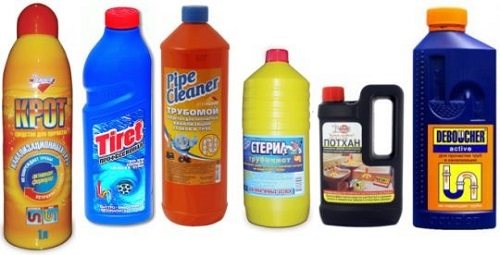

Cleaning chemicals
This flushing method can also be used if the contamination is very large. True, they cannot be softened or removed with water. Therefore, prepare a piece of metal reinforcement slightly longer than the length of the radiator itself. Insert the iron rod into the tube of the device and push it inward until it appears on the other side. Sometimes the dirt is so dense that you cannot push the rod through by hand. Only a hammer will help you here, but be very careful. Then you can act with water.
Flushing with chemicals
Currently, there is a fairly large selection of various chemicals on the market that are used to decompose mud plugs in sewer systems. You can also use them to flush the heating radiator. To do this, you will have to reinstall the bottom plugs, it is important that they are sealed.
Now put the radiator on the end, with the open pipes upwards, and pour the flushing liquid inside the battery.
Note that the liquid must fill the instrument to the brim. In this state, he should stand for a couple of hours. Tap the radiator sections periodically with a mallet (wooden or rubber mallet). After that, you can drain the internal filling and continue rinsing with water.
Instead of ready-made household chemicals, you can use caustic or soda ash. True, not in dry form, but their solution.



